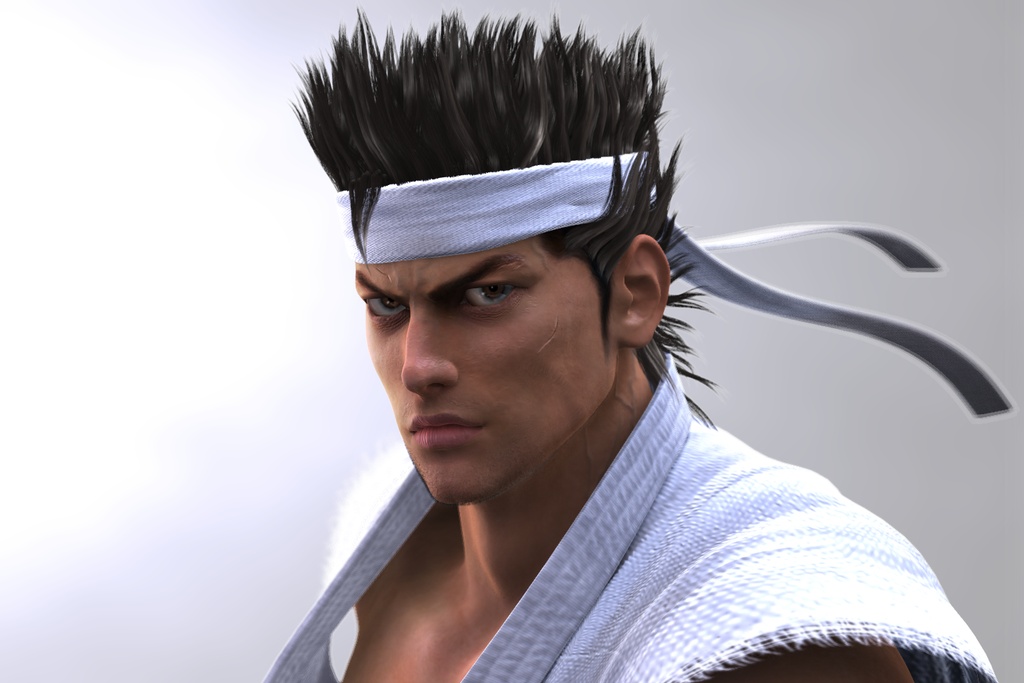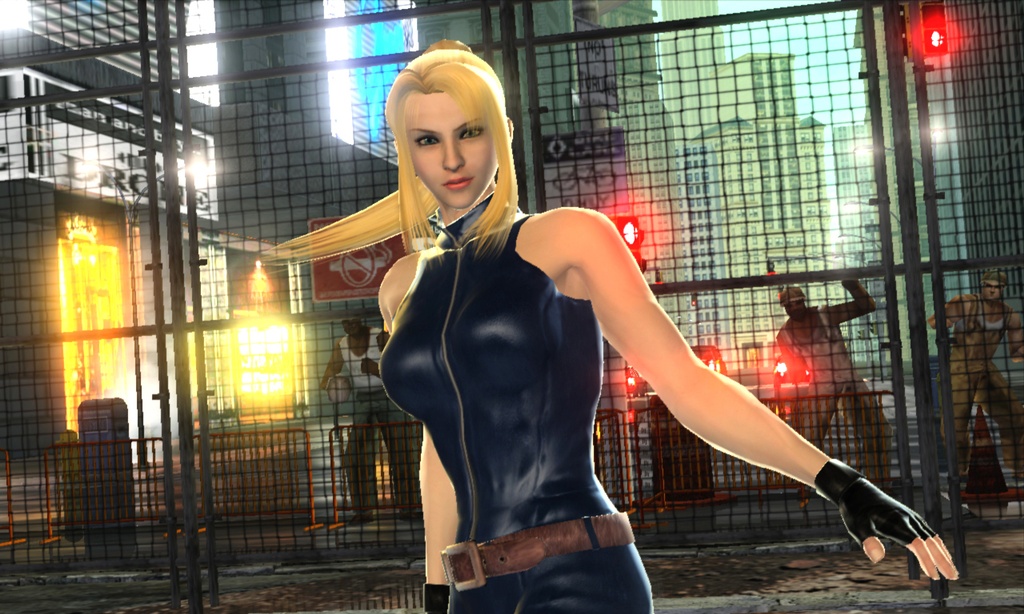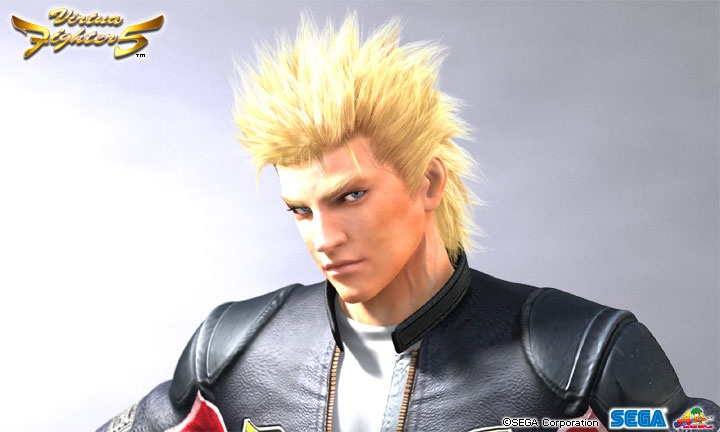Virtua Fighter 5 Beta Test Hands-On
Sega's anticipated next-generation arcade fighter appears in playable format. Check out the first details inside.
TOKYO--During the weekend, Sega launched a surprise beta test of Virtua Fighter 5 at the Club Sega arcade in Shinjuku. Though this is the first time the game has appeared in playable format, the test took place with virtually no prior announcement. Still, the Club Sega was packed with more than two dozen beta test players, as well as a large crowd of spectators.
Beta-testing of Virtual Fighter 5 was a bit costlier than usual since it was mandatory for players to purchase a $4.17 (500 yen) IC card that records their game data, in addition to the usual $0.83 (100 yen) per credit. This will probably be optional when the game is released, similar to the IC cards used in Virtua Fighter 4, Tekken 5, and other games. But at the beta test, it was required since the card system runs in conjunction with Sega's new VF.TV broadcast program, which was also being tested at the scene.
As expected, Virtua Fighter 5 has been massively improved in terms of graphics. With its platform shift to the Lindbergh arcade board, the game now plays in high definition. The beta test ran on a new Sega arcade cabinet that featured a slick black body and a 16:9 LCD monitor that seemed to have a smooth response time. With a flat panel display, the new cabinet also takes less room than traditional CRT cabinets. However, for arcade operators, these new cabinets will be unquestionably more expensive as well. We've previously seen Lindbergh games running on normal CRT cabinets (which makes them look blurry and more like current-generation games), but whether Sega will make that option available for the sake of small arcade operators is something we'll have to find out later.

The shift to HD has really upgraded the graphical quality in VF5, and we could see exceptional detail in the characters, such as wrinkles on Shun's fingers. Rather than simply importing the models from VF4, the developers seem to have remodeled all the characters from scratch. A few changes include the appearance of the wrestler Wolf, who looks more buffed up, and Vanessa, who was a new fighter in VF4, but who now looks less muscular and not as dark as before. No photography was allowed inside the arcade, but Sega's official VF5 site has portraits of the characters, which are about identical in quality to the real-time renderings in the game.
VF5 keeps the customization system from VF4, whereby players can earn accessories to give different looks to their characters. The game of course offers a larger library of accessories than VF4. In addition, VF5 has also doubled the number of costumes from previous installments. While past entries in the series only had two costumes per character (one for P1 and one for P2), VF5 has two additional costumes that can be unlocked. These bonuses are only available with the use of an IC card, and earning them requires a bit of playing. But we've seen some players already unlocking goodies during the beta test.
The selectable characters during the beta test included all the fighters from VF4 Final Tuned, along with a new wrestler named El Blaze. El Blaze is a masked wrestler that fights in Lucha Libre style, and he's a more technical and speedier fighter than Wolf, who's a power fighter. It's known that VF5 will feature at least one more character, who will be a small Asian female fighter. Unfortunately, she wasn't selectable during the beta test. VF5's character-select screen had one additional vacant slot aside from that of the unnamed female fighter. We'll have to wait and see whether this is reserved for another fighter, or for some other purpose like a random select.
In terms of gameplay, VF5 inherits the traditional controls of a joystick and three buttons. The basics are pretty much the same as before, and gamers who are familiar with VF4 shouldn't have problems adapting. This time around, Sega has emphasized fighting in a three-dimensional space, and the game features the addition of a new move that lets the player slide to the side of his or her opponent (kind of like Lion's move in VF4). Using this trick allows the player to get into a position to attack the opponent from the side. Sega has also implemented new hit reactions, so that when the characters get hit on their sides or their backs, they'll react more naturally than before. In previous Virtua Fighter games, the characters snapped back into position and automatically faced toward (or against) their opponent after they got hit from another direction.

Needless to say, there are a lot of subtle differences from Virtua Fighter 4 in terms of moves, and one of the things we heard from players was that throws seem to come out slower than before. However, the game is still in the beta testing stage, and it's too early to talk about the minor changes, since developers continuously make balance adjustments before their game is released.
Together with the beta testing of VF5, Sega also tested out its "VF.TV" broadcasting system, which is a new attempt to bolster the Virtua Fighter community. The company will electronically broadcast various Virtua Fighter 5 contents throughout arcades nationwide. Local arcades can install a special network-enabled VF.TV kiosk, which features a high-definition LCD screen to display the broadcast from Sega.
During the beta test, mostly live broadcasts from the same arcade were shown on VF.TV, which is logical since it's the only place that VF5 was running at that time. (Technically, the live broadcasts are not real time; they're recorded before they're shown.) The matches come with commentaries that are electronically generated with the use of prerecorded announcer voices. There's a lot of variety in the comments, and you wouldn't know that it's not a real-time narrator the first time you hear it. The bottom of the screen shows the players' names and their various statistics, such as their total number of wins and losses, longest winning streak, and the battle results of their last 10 matches.
The left side of the screen shows the location and time that the match took place, and at the bottom, there's also a time schedule for programs that will be broadcast on VF.TV. During the beta test, Sega showed off a special program every half an hour that ran for about five minutes. Similar to real TV, there are commercial messages before and after the show. These were all advertisements of upcoming Sega games, such as Puyo Pop Fever, Mushiking, and Sonic Gems Collection. Unfortunately, the advertisements ran in low resolution, and their lossy compression was very evident.

Sega showed two programs that looped every hour, one of which was a developer interview shown in the same low quality as the advertisements, and the other was a player-ranking announcement that was being updated in real time. The player-ranking announcement ran similarly to a top 10 music chart on TV, and it was narrated using the same artificial, prerecorded voice system as the battle broadcasts. In this program, the three top-ranked fighters are introduced with a clip of their match to show just how good they are.
We'll bring you more information on Virtua Fighter 5 as Sega releases new details.
Got a news tip or want to contact us directly? Email news@gamespot.com
Join the conversation